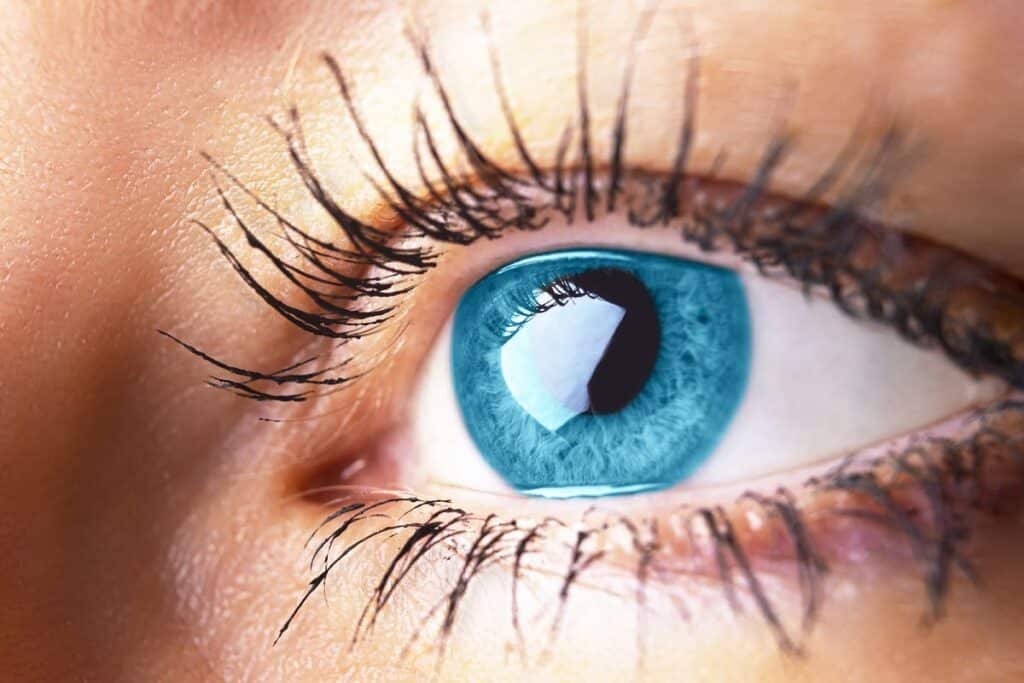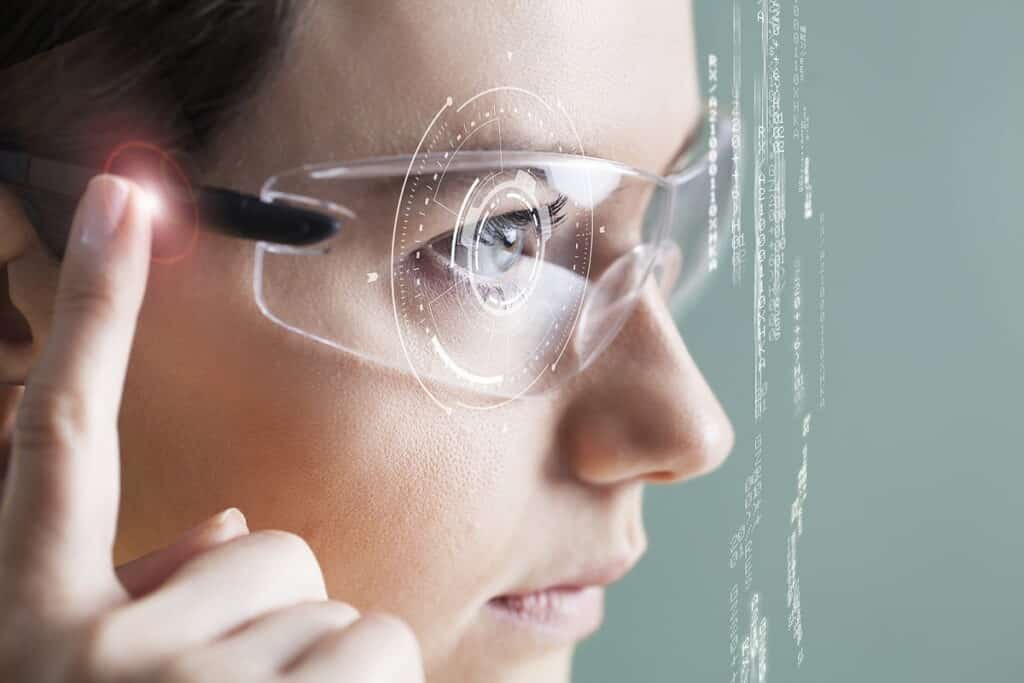Can DigiLens Deliver Holographic AR Devices for Cheap?
Table of contents

Remember when you believed in Santa Claus? It seemed impossible that some jolly fat man could deliver toys to all the children in the world, but the evidence was under the Christmas tree every year. Then one Christmas Eve you caught dad eating the pot cookies and mom spiking the milk with Irish cream and whisky. Disillusionment and years of therapy followed. Eventually, you realized that you could still get the gifts but without kissing up to some bloated dude with a hipster beard and a weird elf fetish. After mom and dad divorced, you could leverage your heartache for hard cash each yuletide season.

That’s sort of the Gartner Hype Cycle (above), a paradigm that describes the rise, fall, and eventual adoption of emerging technologies. Augmented Reality (AR) is one of those technologies still lingering in the so-called Trough of Disillusionment. A startup called DigiLens proposes to change that.
Waiting for AR to Pop
Like an angst-ridden teen who only wears black, let’s stay focused on the disillusionment and disappointment for now. In other words, let’s talk about Magic Leap, the Florida startup that raised expectations – not to mention $2.6 billion – for its AR technology so high that anything less than a device that delivered on-demand orgasms was bound to be met with derision. So $2,295 for the Magic Leap One Creator Edition glass, which looks like something out of a steampunk graphic novel, was about what you expected to get after the magic dust settled. Magic Leap joins Google and Microsoft with a really interesting piece of technology that most of us will never set our eyes upon. In fact, aside from Pokemon Go and overdosing on Electric Kool-Aid Acid, most of us probably have little experience with AR, despite the fact that a number of companies are working on AR-enabled devices such as headsets.
Funding for DigiLens
One of them is DigiLens, a Silicon Valley startup founded in 2003 that has raised $110 million in funding since 2012. The company took in a $50 million Series C just this month, nearly a year from the day that it got $25 million in 2018. The latest round included Samsung (005930:KS) and Sony (6758:JP), as well as Niantic, the one-hit wonder (thus far) of Pokemon Go.
A couple of other names of note include Universal Display Corporation (OLED) and Continental (CON:GR). The former is a $7 billion company that develops and manufactures displays for devices like smartphones and televisions, as well as lighting, based on its patented organic light emitting diodes (OLED). UDC’s interest in DigiLens seems pretty obvious, and it was the first investment of the company’s brand-new corporate venture arm. Continental is a German automotive manufacturer with product offerings throughout the industry, and appears to be ramping up its technological offerings in areas like automation and infotainment. It already held about an 18% share of DigiLens before this month’s new funding round.
DigiLens AR Technology
We first came across DigiLens in an article we did about newly funded nanotechnology startups in 2018. The company has developed a nanoscale “photopolymer material and holographic copy process to manufacture precision diffractive optics by printing rather than traditional expensive methods like precision etching.” DigiLens refers to the AR displays as holographic waveguide technology. Waveguide, as you might guess, is simply the optical structure that guides the light wave to your eye. The hologram part, however, can be a bit misleading, as it doesn’t refer to the Star Wars hologram of Princess Leia that every dude of a certain age references with a certain amount of lusty wistfulness. Rather, it describes the nanoscale holograms within the optics.

We came across an excellent article on holographic waveguide tech on UploadVR that goes into great detail if you need to geek out more, especially as it relates to DigiLens, which the writer calls a “sleeping unicorn” that is “at least seven years ahead of any other waveguide OEM in the game.” That’s partly thanks to the fact that DigiLens got a jump start on developing the tech for the military more than a decade ago as part of a long-term collaboration with Rockwell Collins (now Collins Aerospace after the company was acquired by United Technologies Corporation last year). If that sounds familiar, it’s because it’s similar to the back story of an Israeli startup called Lumus Optical that also specialized in AR hardware for the military.
Applications for DigiLens AR Tech
One thing we should make clear is that DigiLens develops the holographic waveguide technology but not the final products. It leaves that to partners like Continental, which is marketing the startup’s AR Heads-Up Display (HUD) technology for the automotive industry. The AutoHUD waveguide tech is able to double the field of view, creating a much larger display required for AR applications, while reducing the size of the projector to one-sixth of the traditional size, which would require a lot more space in the vehicle’s dashboard:

Earlier this year, the company introduced its DigiLens Crystal AR eyeglasses that manufacturers can customize for a variety of applications. The AR glasses are completely transparent, allowing them to be used indoors or outdoors (not an option with AR glasses from companies like Magic Leap) for business purposes or for entertainment (usually for those of us watching people gesture wildly in the middle of a city park like a crazy homeless person).

The DigiLens Crystal simply connects to a smartphone via a USB-C cable, giving it up to five hours of power (or as much as 15 hours with a portable battery). It sports a 30-degree field of view, which is similar to the AR display for the Microsoft HoloLens, along with an eight-megapixel camera. The whole package weighs in at less than a half-pound. And, best of all, consumer products should retail for less than $500 (compared to $3,500 for the upcoming HoloLens 2, which is expected to have a field of view around 70 degrees).
The first consumer product based on the startup’s holographic waveguide technology also premiered this year – a crystal clear display for BMW motorcycle helmets. The MonoHUD AR display offers a full color unobstructed 105-degree field of view, along with an AR display field of view of 25-degree diagonal. A voice-activated app allows the rider to pull-up GPS, bike status, and answer phone calls and text messages. The DigiLens MonoHUD is expected to be available for high-volume purchase of less than $399.
Other Holographic Waveguide Startups
Of course, DigiLens isn’t the only AR company developing holographic waveguide technology. In fact, we covered one of its competitors in our article on holograms called WaveOptics, which has grown total funding to about $40 million after a $25 million Series C last December. Another competitor, Akonia Holographics, had raised about $11.6 million before Apple snatched up the Colorado startup last year. Akonia was best known for developing holographic storage solutions but more recently was working on creating wearable “HoloMirror” optics, according to VentureBeat. No doubt Apple feels compelled to join the AR wearables fray.
That leaves companies like TruLife Optics, which was founded in 2014 out of London. While the company’s website is still live, we can’t find much news about what the company has been up to in the last five years. Like DigiLens, TruLife uses holograms embedded in the optics as a tool to route light or images in a customized way. The tech involves using two holograms. The first collects the display image, which is then turned by the hologram and sent along the waveguide to a second hologram. The image is then turned again at about 90 degrees through the second hologram within the optic so that the light is projected into the eye of the user. Whether any of that is being turned into an actual product is anybody’s guess.
Conclusion
In other words, DigiLens seems to have few peers that we could find for its particular holographic waveguide technology. It has assembled a roster of investors and partners to help commercialize its technology that would seem to put it in prime position to help pull the AR market out of the doldrums of the Trough of Disillusionment and onto the Plateau of Productivity (and profit). While the big tech companies have shown a willingness to pay big bucks for VR/AR technology (think Facebook’s $3 billion purchase of Oculus VR), it’s unclear how attractive DigiLens would be to a company still in search of its own AR wearable (Amazon, anyone?). Its business model of licensing its technology and remaining product agnostic has the potential of making it not just a unicorn in the short term but a leader in AR in the long term. We wrote a few years ago that AR could be one of the biggest investment opportunities ever. DigiLens could just be the company that proves us right in the coming years.
Sign up to our newsletter to get more of our great research delivered straight to your inbox!
Nanalyze Weekly includes useful insights written by our team of underpaid MBAs, research on new disruptive technology stocks flying under the radar, and summaries of our recent research. Always 100% free.














